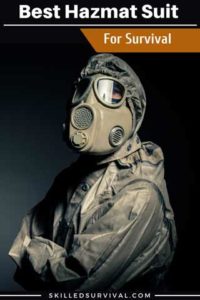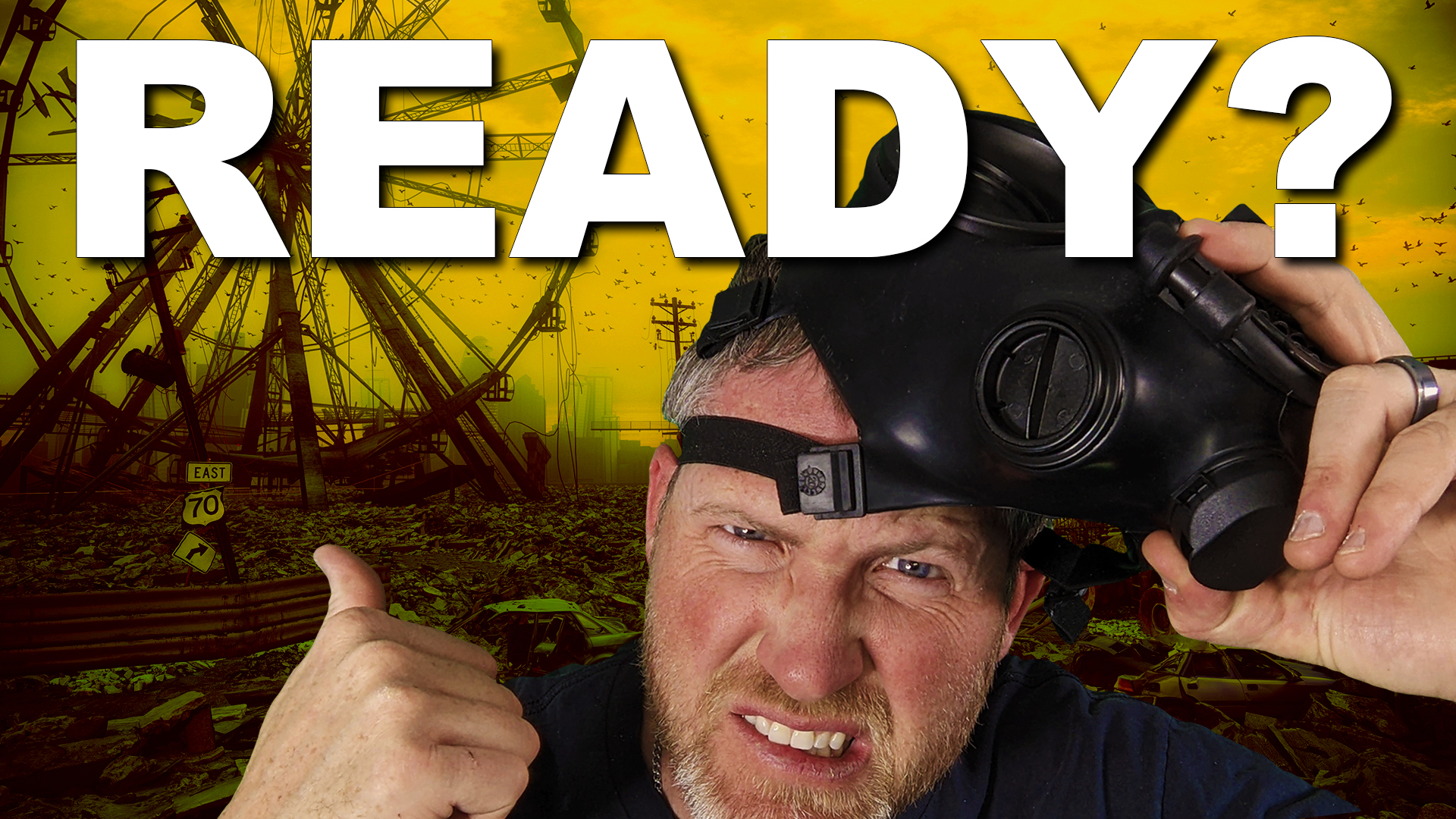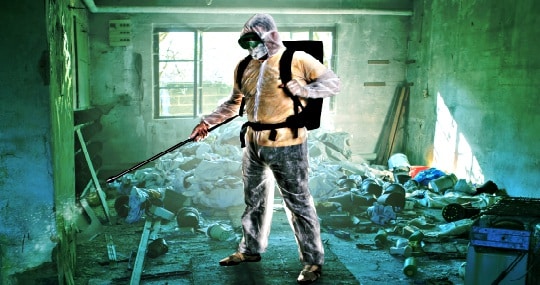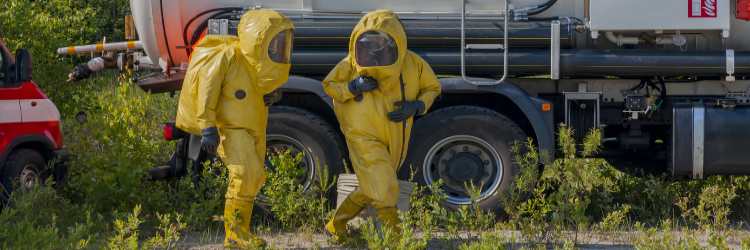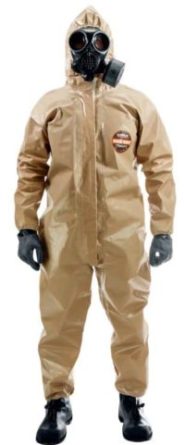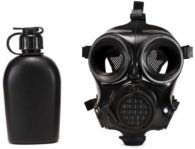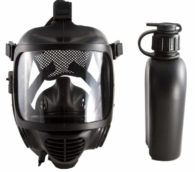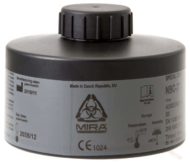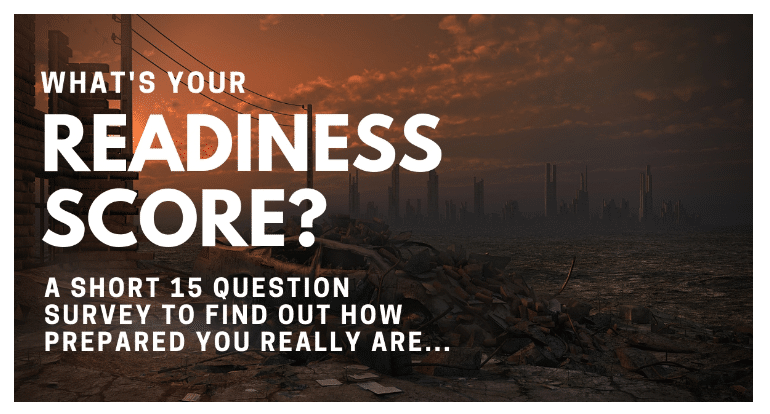A Hazmat Suit Is Not Something You Buy Often – So Get It Right The First Time.
Let me guess…you’re searching for REAL answers to your SERIOUS questions about hazmat suits.
Why? Because there’s a ton of confusion surrounding these odd-looking “suits.”
So, you must decide first, do you even need one, and if so, which one is best…
You need someone you can trust to give you some straight answers.
Hi – I’m Jack – I’m that someone, so let’s begin.
Here are just a few of the most popular Hazmat Suit questions we get:
-
What Is A Hazmat Suit?
-
How Does A Hazmat Suit Protect You?
-
What Exactly Does A Hazmat Suit Protect Me From?
-
Hazmat Suit Vs. Radiation Suit
-
Should I Invest In A Hazmat Suit?
-
What Is The Best Hazmat Suit For Survival?
Are You Ready For The Tough Times Ahead? Take My 60 Sec Quiz To See If You’re Part Of ‘The Fragile Masses’ Or Not… Start Quiz Now!
What Is A Hazmat Suit Anyway?
Here’s the “official” (longwinded) definition provided by Wikipedia:
A hazmat suit (hazardous materials suit), also known as decontamination suit, is a piece of personal protective equipment that consists of an impermeable whole-body garment worn as protection against hazardous materials. Such suits are often combined with self-contained breathing apparatus (SCBA) to ensure a supply of breathable air. Hazmat suits are used by firefighters, emergency medical technicians, paramedics, researchers, personnel responding to toxic spills, specialists cleaning up contaminated facilities, and workers in toxic environments.
So, let’s untangle that complex web of jargon. Basically, a hazmat suit is a garment that, when worn, creates a barrier between you and the rest of the world.
It’s as simple as that.
↓Choosing A Hazmat Suit For Prepping and Survival: Haz-Suit ↓
Why would you want a barrier? To protect you from any number of hazards, such as:
- Chemicals Agents (i.e., chemical attack or warfare)
- Biological Agents (i.e. plague)
- Nuclear Agents (i.e., fallout)
- Fire/High Temps
You can even consider an astronaut’s spacesuit as a specially designed hazmat suit because space is not survivable without one!
And while the suit protects your skin, it won’t protect your eyes or breathe for you.
So if you want to avoid breathing toxic air and protect your eyes – you’ll want to wear the hazmat suit with a quality gas mask.
Simple enough? Let’s move on.
As A Way To Introduce You To Skilled Survival, We’re Giving Away Our #78 Item Complete Prepper Checklist. Click Here To Get Your FREE Copy Of It.
How Does A Hazmat Suit Protect You?
Ok, now we’re getting into a topic that’s a bit more interesting…
Hazmat suits are typically made with special airtight, chemical-resistant materials. Different materials are used for different hazardous scenarios. Some of the most popular “fabrics” are:
- Teflon
- Heavy PVC or Rubber
- Tyvek
- Insulating or Reflective Materials
These materials create a personal barrier of protection – individual isolation. They are made to be flexible, wearable, and mobile so you can move around and accomplish some tasks.
However, don’t expect to enjoy a yoga session in one or run a marathon. They are cumbersome to wear and tend to get warm inside as well because they DON’T “breathe.”
They’re not designed for comfort – they’re made to block all harmful molecules from coming into contact with you.
As A Way To Introduce You To Skilled Survival, We’re Giving Away Our #78 Item Complete Prepper Checklist. Click Here To Get Your FREE Copy Of It.
What Exactly Can A Hazmat Suit Protect You From?
It depends.
Different hazmat suits are designed to protect you from different harmful environments.
So it’s important to understand which environment(s) a hazmat suit is made for…
For example:
A suit designed as a heat shield would be a lifesaver in a blazing fire but a very poor choice in a biological disaster. However, wearing a PVC-based suit near a fire is just as bad (maybe worse) – it’ll melt!
So, donning the proper hazmat suit depends on the emergency situation.
This is where the idea of Hazmat Suit Levels comes in. OSHA created suit levels to match the proper suit with the danger. So, let’s go over each level in detail.
Level A
Level A is the ultimate in skin, eyes, and breathing protection.
For a suit to meet the Level A requirements, it must include the following:
- a full-face shield with a self-contained breathing apparatus (SCBA)
- a two-way radio system
- footwear with steel-toe boots
- chemical-resistant gloves
The key to meeting level A is the self-contained breathing apparatus. It must be fully contained within the suit. That’s why these suits when donned, look so freaking enormous!
I think they look like a yellow sumo wrestler and a turtle had a baby…
These suits create complete separation between you and EVERYTHING else – even the air.
A passive air filtration gas mask is not good enough for Level A.
Instead, level A requires you to carry an air tank within the suit.
It’s the suits you sometimes see in the movies. The huge suits are donned by frightened scientists who are meeting aliens for the first time. Or doctors tending to patients with deadly contagious diseases.
Level A is a suit that’s designed to take zero risks in contamination. They are the ideal choice when dealing with something hazardous and of unknown origin.
However, they are overkill for the common man.
↓ Level A Hazmat Suit ↓
Level B
Level B suits are like Level A suits with one notable exception – the breathing apparatus does not need to be fully encapsulated. Instead, you can wear it on the outside of the suit.
However, level B still requires an active air supply. Again, passive gas mask respirators do not meet level B’s requirements.
It’s also still necessary to wear steel-toe boots and carry two-way radio communication.
However, even Level B is more than most people need to prepare…
Level C
This is the most common type of “hazmat suit.”
If you want a set of hazmat suits for your family – this is likely the level you will be purchasing.
Level C has most of the same protections as a Level B suit. But it does not require the same level of respiratory protection.
This is the level most suited for regular folks.
This hazmat suit allows you to wear a gas mask instead of an SCBA breathing mask/tank.
It’s a general-purpose hazmat suit to protect against Chemical, Biological, and Nuclear Agents. So that will be our focus for the rest of this article.
And the good news is that you can buy several airtight suits today. We’ll get to those shortly…but first.
As A Way To Introduce You To Skilled Survival, We’re Giving Away Our #78 Item Complete Prepper Checklist. Click Here To Get Your FREE Copy Of It.
Hazmat Suit Vs. Radiation Suit
First off, protection from radiation is complicated. Why? Because there are two types of radiation to worry about:
- Ionizing radiation
- Particle radiation
And no known suits can protect you against ionizing radiation (i.e., gamma rays, x-rays, etc.) However, a suit can minimize exposure to airborne radioactive particles (i.e., fallout).
Side note: standard protocol to protect yourself from ionizing radiation is a shield of concrete 6.6 feet thick or about 1.3 feet of lead… you need a building – not a suit – for that!
Ok, as far as a hazmat suit vs. a radiation suit – they are essentially the same thing. They both create a barrier to isolate you from a hazardous environment.
As A Way To Introduce You To Skilled Survival, We’re Giving Away Our
Ultimate Survival Gear Checklist. Click Here To Get Your FREE Copy Of It.
Why You Should Invest In A Hazmat Suit Today
If you believe, as I do, in living a resilient life, then yes, you should invest in a hazmat suit. Ideally, you should have at least one for each family member.
Plus, a gas mask for each family member and two-way radio communication for everyone.
Why all this gear? Could it be an unnecessary expense? What are the odds of needing it?
You could read many books about probability, statistics, and uncertainty. But history tells us enough to know that bad things happen. Sometimes really bad things happen. And modern technology is NOT helping to lessen the reach or reduce the impact…
So, you can bury your head in the sand and hope the lion doesn’t see you. Or you can take intelligent measures to reduce your exposure to future risks and hazards.
I’m squarely in the “resilient camp” – the ostriches are in the “fragile camp.”
As A Way To Introduce You To Skilled Survival, We’re Giving Away Our #78 Item Complete Prepper Checklist. Click Here To Get Your FREE Copy Of It.
THE Best Hazmat Suits For Survival
MIRA Safety HAZ-SUIT Protective CBRN HAZMAT Suit
The MIRA Safety HAZ-SUIT was designed to provide protection for a wide range of chemical, biological, radiological, and nuclear agents.
You can order a suit in a variety of size options from children 4 years of age to large adults.
Also, they are proudly made in the U.S.A.
The fabric used for the HAZ-SUIT is a durable, lightweight film composite. It protects you from over 125 chemicals, including CWAs and TICs.
The fabric has been tested in a variety of storage situations for long periods of time. It shows no signs of degradation if stored in cool, dry conditions away from direct sunlight.
HAZ-SUIT List Of Key Benefits
- Available in a wide range of sizes (even for young children)
- Ideal for any and all civil defense applications
- Same fabric materials used by professional first responders (and the U.S. Military)
Is this suit more expensive than other cheap disposable brands? Yes. But this suit is built to last and is one you can depend on.
Consider it an investment for a lifetime.
↓ CBRN Hazmat Suit MIRA Safety↓
Gas Masks
The gas mask is also an important investment in preparing for chemical, biological, or nuclear attacks because air is THE most important critical survival need.
Why get a standard gas mask and not go all out with a full Self-Contained Breathing Apparatus? Cost.
SCBAs are extremely expensive – click here to get an idea of the price.
The good news is – a quality gas mask is much more affordable. And I also recommend MIRA Safety for your gas mask needs as well. They only sell the best gas masks with full face shields and quality NBC air filters.
One-stop shopping, and you’re protected for life (click on any image below to learn more about these products).
Boots / Gloves
A hazmat suit is only as good as the boots and gloves you choose to go with it. But they don’t come with them – (i.e., sold separately). So here are the gloves I currently recommend:
 Showa Atlas 772 M Nitrile Elbow Length Chemical Gloves
Showa Atlas 772 M Nitrile Elbow Length Chemical Gloves
These hazmat gloves go up past the elbow, decreasing the chances of chemicals or toxins breaching your hazmat suit.
They are tough nitrile-coated gloves that will protect your hands and arms from chemicals, puncture, and abrasion.
Excellent protection with dexterity – what’s not to like?

 ONGUARD 97591 Latex 12″ Hazmat Men’s Boot and Shoe Cove
ONGUARD 97591 Latex 12″ Hazmat Men’s Boot and Shoe Cove
For the most part, rubber boots are a commodity. Just make sure they fit your feet well and are reasonably comfortable.
These OnGUARd Latex Books work.
Final Thoughts
Hazmat suits are one of those items people rarely buy until a really bad event starts to spiral out of control.
For example, finding a good hazmat suit was nearly impossible in the aftermath of the Ebola scare…And that incident didn’t even turn out to be much of anything.
What do you think happens if we have a legitimate chemical attack, a biological contagion, or a nuclear explosion? These suits will be gone, and you’ll be out of luck.
The time to purchase items like there is when times are calm, otherwise, you’re going to pay a whole lot more, or many can’t get any at all…
Prepare, Adapt, and Overcome,
“Just In Case” Jack
P.s. Are you ready for the tough times ahead?
Find out now by taking my short Readiness Score Quiz – it’s absolutely free.
Once complete, you’ll know exactly where you stand on the “fragile” vs.” resilient” spectrum.
So click here to start the Quiz….And don’t worry; the questions are so easy a 3rd grader could answer them.
Click on the image to begin the Quiz and find out once and for all if you’re part of “The Fragile Masses” or “The Resilient Few.”
The post Best Hazmat Suits To Prepare For Deadly Diseases appeared first on Skilled Survival.


